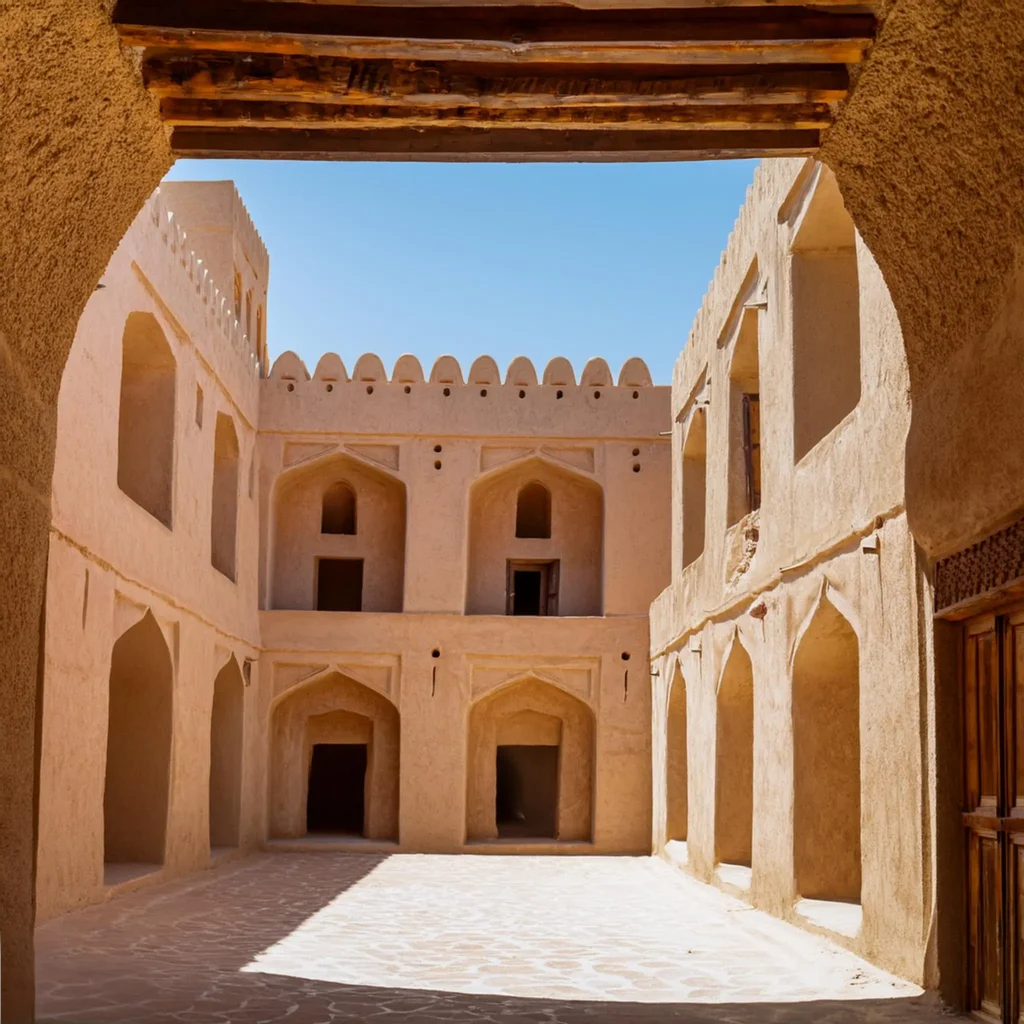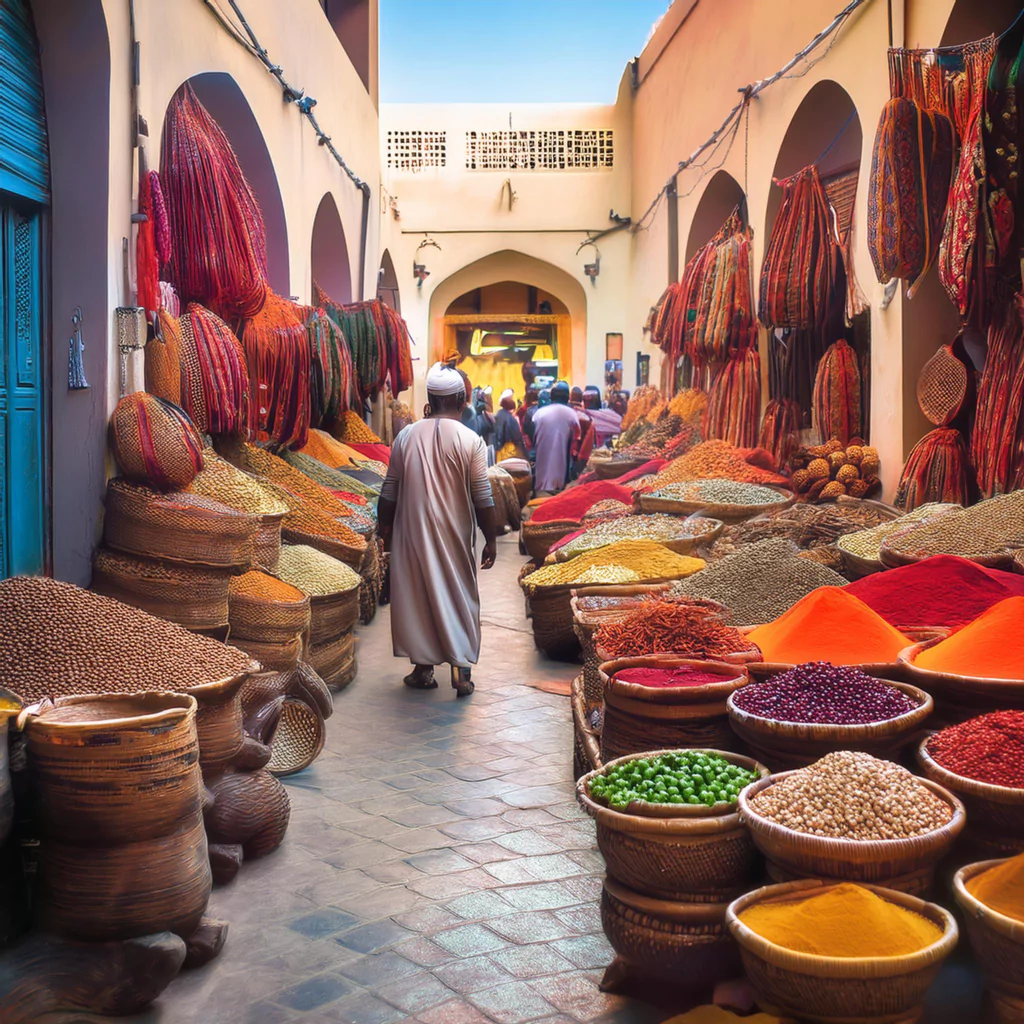From dramatic canyons to an enclave of hidden paradise, Oman is full of surprises. Get to know its rich culture with a cup of qahwa at traditional homes, or sample local honey and dates at the markets.
Musandam Peninsula
Rugged mountains dive into azure seas on the Musandam Peninsula, a lonely exclave that stretches toward Iran. Here, a seafaring culture persists among tribes that share neither cultural nor linguistic links with their southern Omani neighbours. Twenty percent of the world’s oil floats past here, churning through coves and inlets where Omanis live in stone villages, giving the place a feel that’s at once center and edge of the globe.
Known locally as Ruus al Jibal, the peninsula is a glistening jewel of dramatic mountain capes and sheer-sided khawrs (fjords), and while it’s less travelled than some of Oman’s glitzier neighbours, it’s attracting attention from visitors keen to see its ancient people and spectacular natural beauty. Its main town, Khasab, is a welcoming port city with a 17th-century fort that’s festooned with crenellated turrets. The graded road that runs north from here straddles a ridge, offering high-altitude views in every direction.
Bahla Fort
Located in the oasis of Bahla, this immense ancient mud-brick fortress is the first to be listed as a UNESCO World Heritage Site. Built by the Banu Nabhan tribe between the mid-12th and 15th centuries, it reflects the prosperity of this region when its inhabitants were dominant in the Omani interior. The high walls enclose a warren of towers with narrow, slit-like windows called machicolations.
Its imposing double-archway entrance leads to the historical Friday Mosque, and there are a number of shops selling silver and pottery. It is worth a visit to see this relic of Oman’s rich history and its place in the landscape. Sadly, there are no brochures or exhibits explaining the details of this vast complex so visitors will have to rely on guidebooks or a tour to learn about it. There is also a large souk, which is still active today.

Nizwa
Nizwa is another must-see. Located in Oman’s desert region of Ad Dakhiliyah, it is famous for its architecture and natural charm. It’s home to the 17th-century Nizwa Fort and the UNESCO-Heritage Falaj Daris, as well as fruit plantations and a lively souq.
Known as the ‘Green Mountain’, Jebel Akhdar is a stunning contrast to the rocky landscape of the Al Hajar mountains. This fertile escarpment is overgrown with pomegranate, apricot and lemon trees, and hiking trails lead to ancient mud villages and picture-perfect vistas.
On your way back to Muscat, lock up your car and explore Nakhl’s captivating mud-built villages on foot. The village of Nakhl, boasts one of Oman’s most beautiful forts, dramatically set on a natural rock outcrop and framed by jagged peaks of the Jebel Nakhal range. There’s also Misfah Old House, an incredibly atmospheric guesthouse that’s housed inside an ancient mud fort.
Wahiba Sands
For many travelers to Oman, a trip to the Wahiba Sands is the quintessential Omani desert experience. The vast dunes glistening with sun-dyed amber hues are a sight to behold. While it’s possible to visit the area on a day-trip, it’s highly recommended to stay at one of the established desert camps. Whether it’s a glamping experience with those famous white aesthetic tents or something a bit more rustic, the camps offer a chance to truly immerse yourself in the desert.
After a morning of exploring the sand dunes and wadis with your guide, you’ll return to your camp to relax. The camps are well-established and staffed with experienced guides who will help you with any questions or requests you might have. They’ll also help you with your vehicle if needed – there are plenty of whispers about needing a 4WD to get in and out of the sand but we found this wasn’t necessarily true (though it certainly helps).
Turtle Reserve at Ras al Jinz
Among classic bucket list animal experiences, bathing elephants in Thailand and swimming with sea lions on the Galapagos Islands make the cut, but perhaps one of the more underrated is watching baby turtles hatching and venturing into the sea. This one-of-a-kind experience takes place at the Turtle Reserve at Ras al Jinz, a nesting site for four different species of sea turtles.
The reserve was established in 1996 and the Ras Al Jinz Turtle Centre followed in 2008. The latter helps educate locals about these endangered creatures and promotes eco-tourism. While natural threats to the turtles, such as birds, crabs and foxes, cannot be controlled, the center works with the ministry to minimize human-induced ones.
Stay right in the middle of everything at the reserve’s own hotel, which offers 19 simple and cozy Carapace Rooms that are great for families. Or if you’re looking for something more unique and romantic, opt for the luxury eco-tents, pitched on a hill a short walk from the reserve with beautiful ocean views. They have a separate dining area, air conditioning and en suite bathrooms.
Conclusion
In conclusion, Oman offers an unparalleled blend of natural beauty, historical treasures, and cultural richness. From the ancient Bahla Fort and the serene Wahiba Sands to the breathtaking Turtle Reserve at Ras al Jinz and the dramatic Musandam Peninsula, each destination promises a unique adventure. Whether you’re exploring centuries-old architecture, immersing yourself in traditional Omani hospitality, or marveling at the country’s stunning landscapes, Oman has something for every traveler.
To plan your journey and discover more hidden gems, visit our website at Oman Secrets, where you can find everything you need to make your trip unforgettable!

